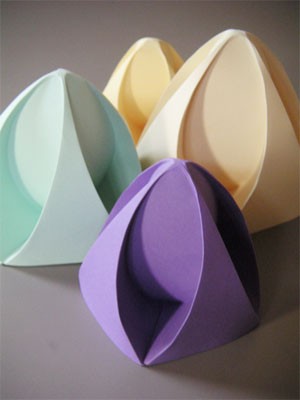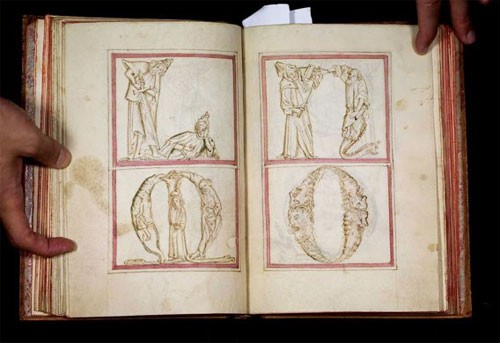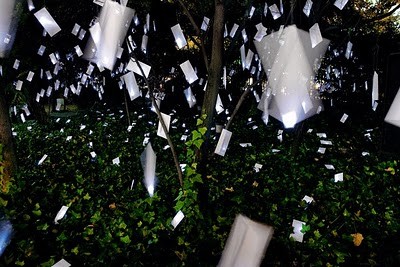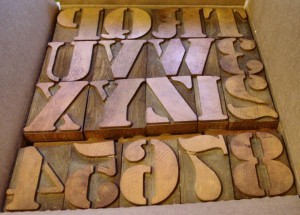 My friend Tracey sent me an article about Jeannine Mosley, who’s been folding paper since she was 5 and has never gave up her origami habit. I really love the ones to the left. (You can make your own, it’s called a “Square-Based Origami Bud” and the instructions are here.)
My friend Tracey sent me an article about Jeannine Mosley, who’s been folding paper since she was 5 and has never gave up her origami habit. I really love the ones to the left. (You can make your own, it’s called a “Square-Based Origami Bud” and the instructions are here.)
![]() Mosely is an expert on minimalist origami, in which one is restricted to just four folds. She has constructed an entire alphabet—both upper and lower cases—of minimalist origami letters (unfortunately I can’t find a picture of them).
Mosely is an expert on minimalist origami, in which one is restricted to just four folds. She has constructed an entire alphabet—both upper and lower cases—of minimalist origami letters (unfortunately I can’t find a picture of them).
![]() She also builds 3D structures, like the Menger’s Sponge out of 66,048 business cards. You can see photos of the process of building the structure here and here.
She also builds 3D structures, like the Menger’s Sponge out of 66,048 business cards. You can see photos of the process of building the structure here and here.






